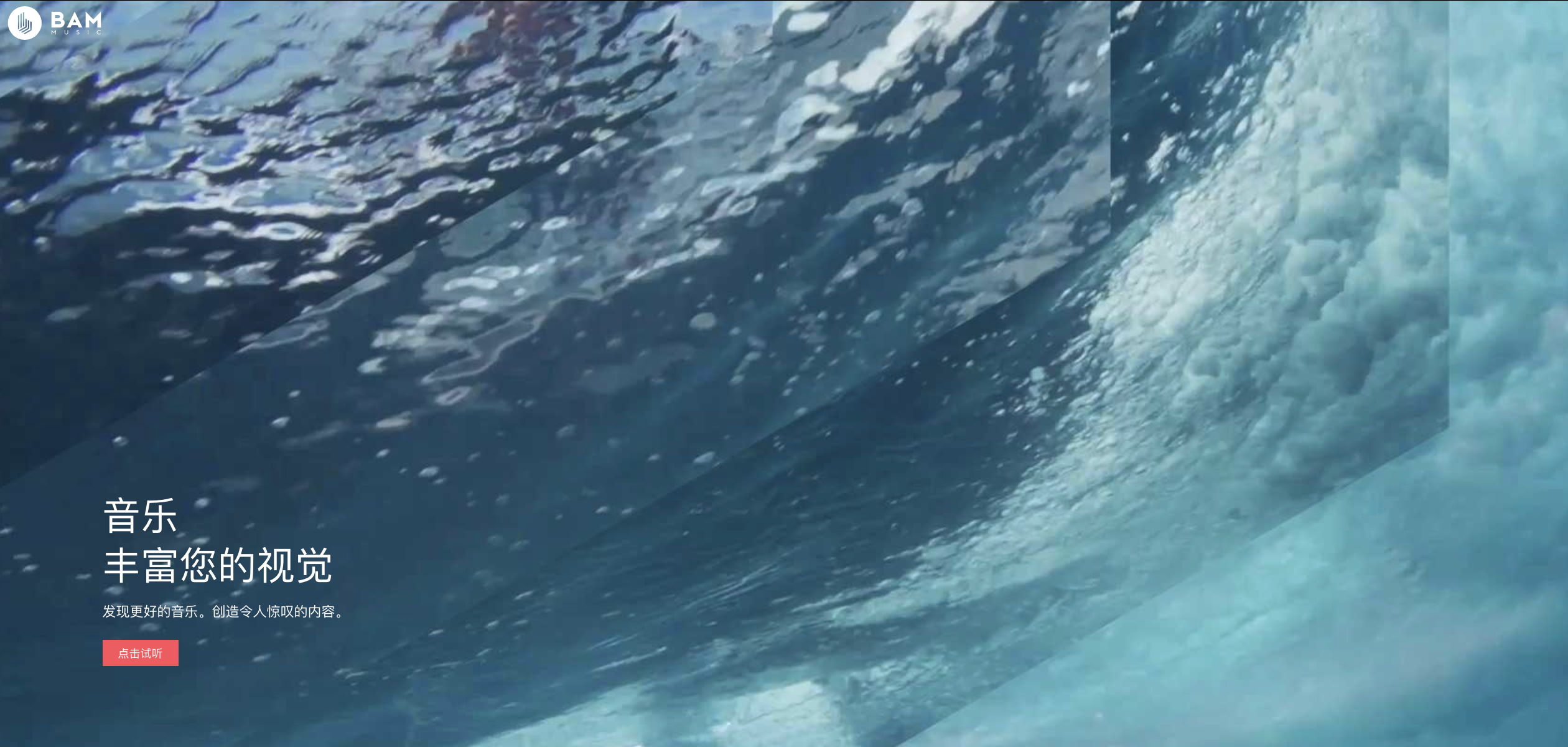The latest spot for BMW 7 Series in China employed ambitious VFX techniques to recreate a 3D version of the Tian Shan Mountains in Xinjiang, western China.
The brief from Beijing agency Serviceplan was to showcase the car as a trailblazer that metaphorically and, in this case, literally lights up the environment around it. As the car cruises through the mountains it sets trees aglow and illuminates mountainsides to an increasing degree of intensity. The spot was required to be an arresting blend of commercial and art filmmaking, an approach designed to reflect the car’s innovative features. The brief also specified the need to display the vehicle in its entirety as late in the film as possible.
Chosen to direct was rising French talent Xavier Chassaing, who had won admirers for previous commercial work for luxury brands like Chanel, and in particular his spectacular experimental short film Dry Lights, which employed similar light effects that Serviceplan and BMW were looking to capture. For Chassaing it marked his debut directing a car commercial. His skillset was complemented by DoP Paul Meyers, a Mandarin-speaking US-based cinematographer with a wealth of car shooting experience in China.
The key to successfully executing the brief then, lay in creating attractive, believable light effects. Most such effects are created in 3D, meaning shooting the landscape alone would not be sufficient – the production would need to digitally build a full 3D environment. Production company P.I.G China EP Nick Dodet explained the necessity and benefits of working in this way,
“By scanning existing locations and rendering them as 3D elements, we were able to incorporate the light effects, and adapt the locations to the car and the story simultaneously. Creating a full 3D version of the scenery, using real textures, allowed us to adapt the locations at will.”
As such, all locations in which the car appears are a blend of live action and 3D. Live action shooting involved three days in Xinjiang and a day of studio shoot in Shanghai. A further four days were spent scanning the Tian Shan range by drone.
Xavier Chassaing’s ‘Dry Lights’
With the verdant Xinjiang landscape built in 3D, it then fell to VFX, animation and motion design studio Mathematic to bring the scene to life with spectacular light effects. The Paris-based studio was the obvious choice, having worked with Chassaing on Dry Lights, meaning they had ready all the required tools, software and plugins.
To process the massive volume of data required to illuminate thousands of individual plants, trees and rock faces, Mathematic utilised Clarisse software, a fusion of animation package, compositing software and a 3d rendering engine. The program comes with the added benefit of allowing the artist to see their work on the final shot, rather than working on a single layer.
Clarisse has won over important sections of the VFX industry since it came onto the market. London VFX powerhouse Double Negative’s Chief Technical Officer, Graham Jack, for instance, says “Not only is Clarisse a blazingly fast renderer but it allows an artist an incredible amount of flexibility in how they setup their scenes. It somehow manages to allow very complex setups while making it seem simple, intuitive and artist friendly.”
With a crack-team and cutting edge software in place to tackle the 80% of shots that required VFX, the biggest challenge was time, with just 31 days to edit and post produce the 30 second film.
The final film represents a successful collaboration of creative and technical teams in China and France. Dodet partly attributes the successful execution of a complex job to a decisive and supportive client, “[BMW] had a very clear brief, which didn’t change much throughout the production and post production process, which makes a big difference. The client trusted the agency, director and production house, and we felt their support throughout the project.”
He also wished to pay special tribute to agency Serviceplan, “Working with Serviceplan is a very horizontal type of relationship. Agency, director, production and post production work together as a team, and it makes a huge difference when looking for solutions to unforeseen issues,” adding that “the involvement, dedication, and passion for the project displayed by the Serviceplan team was a major driving force, allowing all to focus on doing what they do best and not lose time and energy on peripheral issues.”
The spot, without voice over
宝马近期在中国发布了7系广告片, 该片大胆地采用了视效技术,用3D打造了中国西部的新疆天山。
北京Serviceplan广告公司的广告概述要展示出这款车是一个开拓者,广告中真实且有比喻意义地点亮了周围的世界。车子飞驰在山峰间,点亮了树木,点亮了山坡,亮度逐渐提升。广告要融合商业元素和电影制作艺术,夺人眼球,借以反映出这款车的创新特征。广告概述还要求,要在片子中尽可能晚一点展示出车子的整体。
法国新生代导演Xavier Chassaing被选中执导广告片,他此前为香奈儿等奢侈品牌打造的商业广告曾为他赚得了不少人气,其中实验性短片Dry Lights尤为突出,它所采用的灯光特效正是Serviceplan和宝马所要捕捉的。对于导演Chassaing来说,这也是他执导汽车广告的处女秀。此外,电影摄影师Paul Meyers担任该广告的摄影指导,这也是对导演的有力补充。Paul Meyers平日在美国工作,但是会说中文,有着丰富的在中国进行的汽车拍摄经验。
要想将成功将广告创意落到实处,关键在于打造既有吸引力同时又真实可信的灯光特效。大多数灯光特效都是由3D创作的,也就意味着只是把山脉景色拍下来是不够的 – 制作中需要采用3D数字技术搭建整个环境。广告由P.I.G中国制作,监制Nick Dodet向我们解释了采用这种方式进行制作的必要性以及优势,
“通过扫描真实的外景进行3D渲染,我们能够将灯光特效融入其中,让外景同时既能适应汽车,同时又适应故事。整个场景用3D打造,再用真实贴图,这样我们就可以随意调整外景。”
这样,我们看到汽车驶过的所有外景其实都是实拍和3D的结合。实拍包括在新疆拍摄三天,在上海摄影棚拍摄一天。另外四天,还用无人机在天山上空进行扫描。
用3D打造了翠绿的新疆景观,之后的任务就交到了Mathematic(位于巴黎的视效、动画、动态影像设计工作室)手里,加上壮观的灯光特效,让整个场景栩栩如生。选择Mathematic是理所应当的,此前Chassaing导演的Dry Lights短片就是这家公司做的,他们具备新的广告制作所需的全套工具、软件和插件。
一一点亮几千个植物、树木还有岩石表面,涉及了大量的数据处理,Mathematic使用了Clarisse软件,这是一款集动画模块、合成软件和3D渲染引擎于一身的软件。这样的程序能够使项目制作人员看到最终的效果,而不是一层一层的去处理。
Clarisse软件自从面世以后,在视效行业就已经赢得了举足轻重的认可。比如说,伦敦很棒的特效工作室Double Negative的首席技术官Graham Jack这样评价道,“Clarisse不仅仅是一个能够快速进行渲染的软件,同时也让艺术家在场景设置时有着充分的灵活性。也可以应对非常复杂的设置,让它们看起来非常简单、直观、好用。”
80%需要视觉特效的部分都是由制作团队和尖端的软件完成的,但是最大的挑战还是时间的紧迫性,30秒的视频,剪辑和后期制作的时间只有31天。
最终的成片得益于中国和法国创意和技术团队的成功合作。这么复杂的任务之所以能够这么成功地执行,Dodet将部分原因归功于宝马的决断性和支持,“宝马的广告概述非常清晰,而且在整个制作和后期中没怎么变,这一点非常重要,客户信任广告公司、也信任导演和制作公司,整个过程我们都可以感受到宝马的支持。”
他也希望可以特别致意Serviceplan公司,“与Serviceplan一起共事是一次非常水平的合作关系。广告公司、导演、制作、后期制作团队相互合作,这对于我们解决一些不可预见的问题非常重要,”他还说道“Serviceplan所展现出的投入、专注和热情是推动项目前进的主要动力,让所有人都能集中精力,尽自己最大的努力,不会将任何时间和精力浪费在那些无关紧要的问题上。”





 Nick Dodet, EP, P.I.G
Nick Dodet, EP, P.I.G BAM Music Library Brings Edgy, Indie Sounds to Chinese Creatives
BAM Music Library Brings Edgy, Indie Sounds to Chinese Creatives
